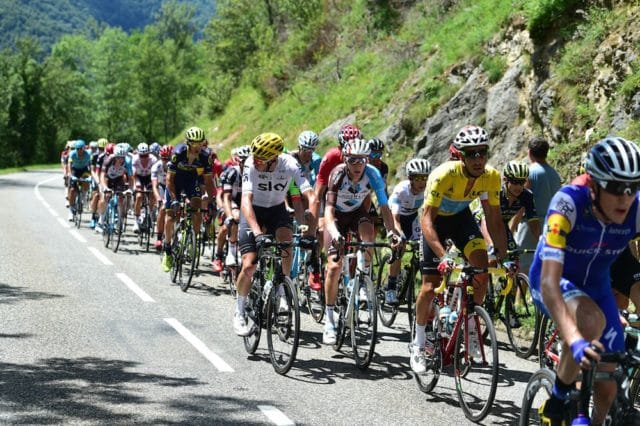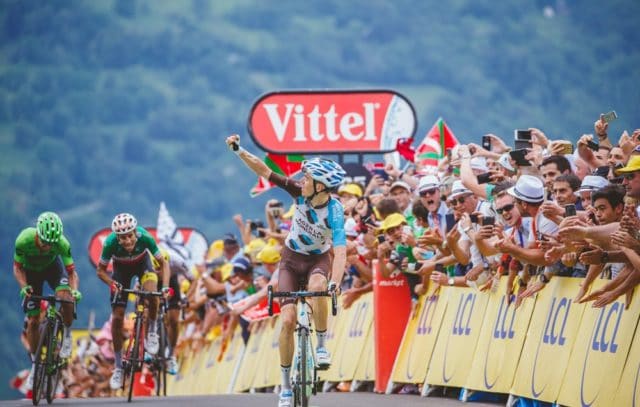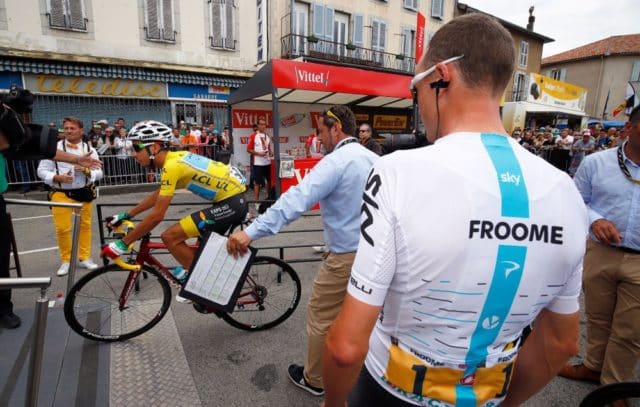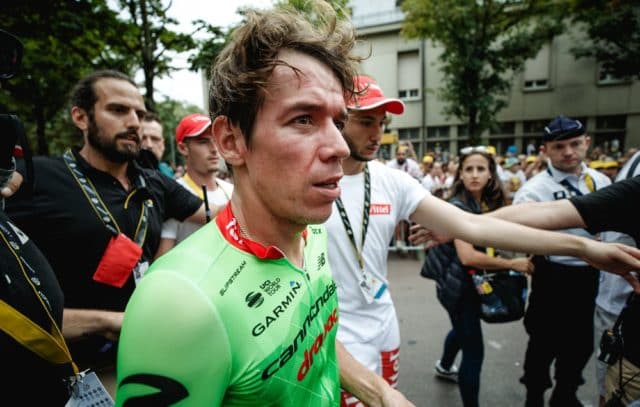Dear Tour de France: We’re Sorry We Called You Boring
The 2017 Tour de France is shaping up to be the tightest ever, with a battle looming between the GC contenders.
The 2017 Tour de France is shaping up to be the tightest ever, with a battle looming between the GC contenders. – By Joe Lindsey


What changed?
In a word: Froome. Specifically, in the final few hundred meters of Stage 12, where he appeared to crack on the steep finishing ramps of the Peyragudes altiport runway under pressure from Aru and Romain Bardet, who went on to win the stage. Aru took the yellow jersey from Froome’s shoulders, and Rigoberto Uran snuck in for second on the stage— both gaining time on race’s defending champion.
On Friday’s short, aggressive stage to Foix, Sky attempted to put things right again, sending super-lieutenant Mikel Landa to mark the early attack by Alberto Contador, and then assigning Michal Kwiatkowski to mind the following move from Nairo Quintana.
It all looked like a setup for an attack by Froome on the final climb. But when it happened, the fireworks fizzled. Froome’s signature accelerations are usually unstoppable, but Aru, Bardet, and Uran appeared to have little trouble reeling him in. Adding to the pressure, Dan Martin gained back a few precious seconds on the descent, and Quintana may have dealt himself back into the game by sticking with the lead group.
The result: a fascinating and fragile top-10 overall, with a mix of strengths and weaknesses that portend an explosive finish to a race which has lulled us to sleep more than once with long, quiet sprint stages.

The Prospects
Fabio Aru, the race’s current leader, is clearly one of the strongest climbers in the race, if not the strongest. But his Astana team is spectacularly weak. A feed-zone crash on Stage 11 knocked support rider Dario Cataldo out of the race, and caused Jakob Fuglsang, then fifth overall, to break two bones in his left arm. After fighting on for another stage despite losing time, Fuglsang dropped out today.
That leaves Aru, in yellow, facing the unenviable leader’s task of controlling the race with just six teammates, none of whom are great climbers. He was isolated early today and did an excellent job on his own, but any weakness will surely be pounced on.
Bardet, an excellent climber, might be in the best position. He’s one of the better descenders in the pack and was aggressive on the final descent today. Perhaps more importantly, his Ag2r-la Mondiale team is one of the strongest in the race. He could take yellow as soon as Sunday’s lumpy transitional stage, if Astana and Aru show weakness. But that means a Frenchman, in yellow, on the race’s second rest day – surely not very restful.
Uran is the wildcard. He was on nobody’s pre-race list of favourites, a fact that served him well. No one discounts him now, and what’s most troubling to his competitors is that they may not know what he’s fully capable of yet. He’s gained time in bits and pieces on every stage, and has followed every move on climbs with relative ease. But we haven’t seen him attack yet. If there’s a climber in the race who can beat Aru, it’s Uran, and Uran is better in time trials than either Aru or Bardet. Uran has an OK team in Cannondale-Drapac; better than what’s left of Aru’s but not as strong at Bardet’s or Froome’s. As risky as it is to wait for opportunities to take more time, Uran probably won’t want yellow until Stage 18.

Which leaves Froome, suddenly the biggest question mark in the race. He clearly has the strongest team; that’s what happens when you have a $30 million budget that dwarfs many other teams combined, and you can sign former World Champions (Kwiatkowski) and Grand Tour podium finishers (Landa) to ride support. But the question now is whether Froome is even the strongest rider on his own team, with Landa riding right on his heels in the GC standings.
Froome is still the best time triallist, by far, of the top contenders, which means the Stage 20 TT looms large for him. He could go in as much as a minute behind and still come out with the race lead. But to get there, he has to get through the Alps unscathed. And never has Froome faced challenges from so many quarters. Even if his plan is to wait for that final TT, he’ll have to be alert to attacks from as many as seven other riders. That’s a lot of wheels to follow, and a lot of matches to burn.
Speaking of burn, since the last prediction I made didn’t exactly turn out so hot, I’ll refrain from any bold prognostication at this point, other than this: the 2017 Tour de France could end up as a memorable, suspenseful, and dynamic race, which is far different than the first 11 stages seemed to portend. And if you’re a fan of bike racing, that’s a great thing, no matter who ends up on the podium in Paris.
READ MORE ON: international races Race News road Tour de France

